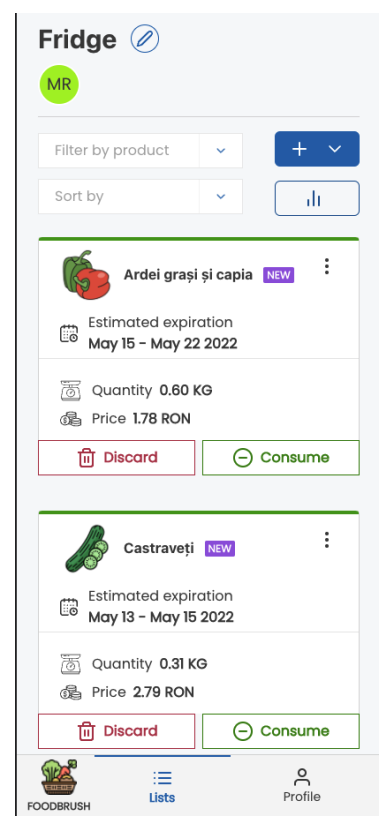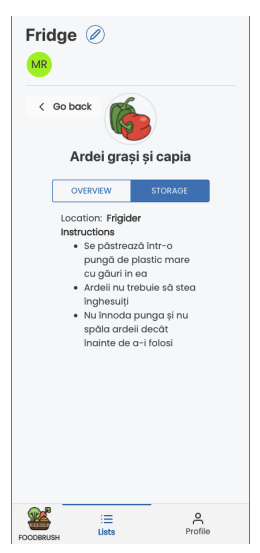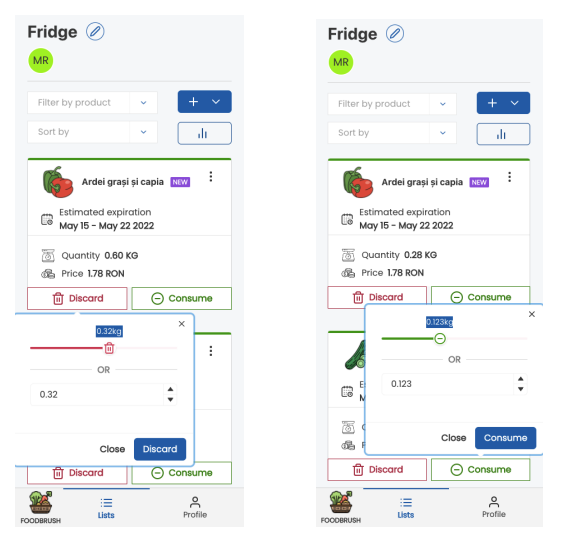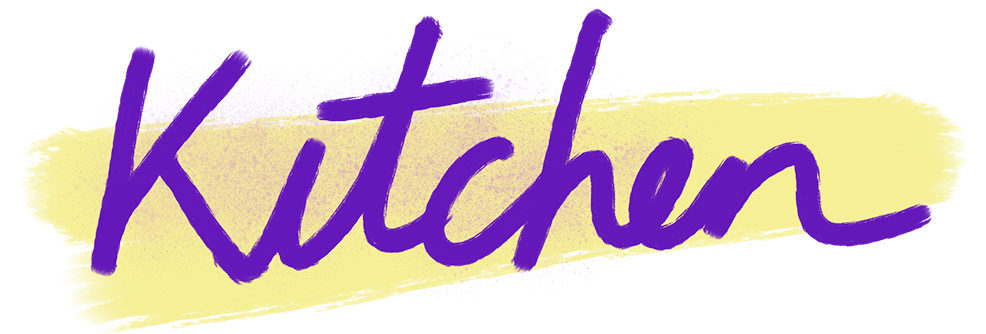Author: Mihail Rosca;
Supervisor: Illir Jusufi / Jorge L. Zapico (LNU);
Type: Prototype // Master thesis;Losing track of existing food items is one of the causes of food waste. This calls for better inventory keeping as one possible solution for reducing food waste. But food inventory keeping is cumbersome and difficult to implement, as the number of food items in a household, and their turnover, is high. This study explored how to work with these challenges in a digital solution focusing in:
- Automatic receipt recognition: Using OCR technology for recording the purchases with less effort by taking pictures of the receipts.
- Limited intervention in time and food category: Limiting the test to vegetables (one of the food categories with highest waste) and to an intervention of four weeks, with the aim not of long term accurate inventory, but of making the food waste visible to the users.
Prototype
The prototype allowed users to log their vegetable purchases and their usage or wastage. It allowed OCT reading and automatically logging of supermarket receipts. The prototype included also extra functionality like shared shopping lists and storage tips for the different vegetables.



The prototype is implemented using web technologies: Mongo DB, Express, React, Node. OCR was implemented using Google Cloud Vision.
Results
The prototype was tested with 13 participants (7 female, 6 male, between in Romania during Spring 2022. The prototype was used during one month, data was collected on the usage, weekly questionnaires were sent to follow up the experience, and a post evaluation survey was conducted one month after the intervention ended to re-evaluate the results. Some of the key fundings were:
It is difficult to manage inventory: while the OCR receipt was appreciated and helped making the process smother, the users confirmed that keeping inventory updated and relevant was difficult, specially removing and logging waste. In this prototype weight had to be added when removing which the users found cumbersome.
Added value: Users liked the extra features that could add value in their everyday life, like the tips on how to store food and the shared shopping lists.
Focus on limited interventions: As observed for the duration of the four-week evaluation, participants’ engagement was high in the first three weeks and started to drop by the end of the last week. Accepting this and treating these types of services as a one time intervention instead of planning for long term engagement may be a good strategy for this type of inventory solutions. The limit to only vegetables in this test was however not well communicated to the users and was not successful in improving the usability.
Green leaf waste: An interesting point was that the vegetable most wasted in absolute weight was salad, even if salad was not on the top of most purchased vegetables by weight.
The master thesis can be downloaded here.
